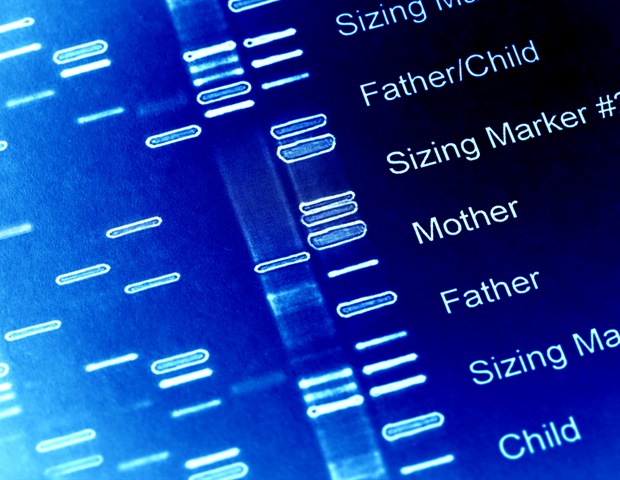It is extraordinarily tricky to check the organic foundation of psychiatric issues, partially as a result of researchers cannot simply acquire mind cells from residing other folks to check within the laboratory. Now, College of Utah Well being scientists have evolved some way round that.
The researchers grew three-d constructions, known as “organoids”, derived from blood cells donated by way of a affected person with pediatric bipolar dysfunction and by way of a number of members of the family. The method recognized meaningful molecular adjustments connected to the psychiatric situation.
The consequences, reported in Molecular Psychiatry, recommend that structural adjustments within the mind noticed in other folks with pediatric bipolar dysfunction might rise up from disorder in a gene that assists with cell signaling. The findings additionally display that lab-grown organoids may give insights into reasons of psychiatric issues.
If we do not need animal fashions, there is not any method to search for remedies in preclinical research. It is a massive problem.”
Alex Shcheglovitov, Ph.D., assistant professor of neurobiology at College of Utah and senior writer of the find out about
Graduate scholar Guang Yang was once first writer of the paper. “There is indubitably a want to broaden new leading edge fashions to check the cell and molecular mechanisms disrupted in pediatric bipolar dysfunction.”
Adjustments within the bipolar mind
Bipolar dysfunction is a psychiatric situation that reasons excessive temper swings, fluctuating between melancholy and mania. When the illness arises in formative years, it may be an indication {that a} robust genetic element is concerned. Shcheglovitov and associates reasoned that any such complicated dysfunction required an leading edge, multidisciplinary way to find out about it.
Melissa Lopez-Larson, M.D., psychiatrist and a co-author of the paper, has accomplished mind imaging of kids with pediatric bipolar dysfunction and their unaffected members of the family to have a look at how the illness adjustments the connections between mind areas. In other folks with bipolar dysfunction, an imaging methodology known as useful MRI, or fMRI, finds adjustments within the mind’s resting job, regardless that it is not recognized what reasons those adjustments.
To be told extra, Lopez-Larson collaborated with neurobiologists Shcheglovitov and Yang, and radiologists, geneticists, and psychiatrists at U of U Well being and Huntsman Psychological Well being Institute, to mix imaging knowledge with an in-depth research of affected person cells on the molecular degree.
Yang began with blood cells donated from a 9-year-old boy with bipolar dysfunction, his folks, and an unaffected sibling. Through cultivating the cells beneath the best stipulations, Yang prompted them to turn into stem cells, which he then grew into neurons. The cells have been then transformed into structured clusters, known as organoids, the usage of an method lately evolved by way of the Shcheglovitov workforce. Organoids mimic early facets of human mind building and make allowance researchers to check communique between neurons, very similar to interactions that happen within the residing mind.
“What those organoids let us do is to style positive developmental phases related to positive mind areas,” says Shcheglovitov. “In our case, the are organoids are extra just like the frontal a part of the fetal human mind.”
Looking for a purpose
To seek out root reasons of the dysfunction, Yang ran exams to resolve how cells from the kid with bipolar dysfunction differed from his members of the family’. Yang came upon that the affected person had a transformation in a gene known as PLXNB1, which had in the past been related to psychiatric illness. He additionally discovered that cells seemed other: neuronal processes known as “neurites” have been shorter. Those lengthy tendrils generally forge necessary connections with neighboring cells.
Including standard PLXNB1 into the affected person’s cells allowed the neurites to develop to standard measurement, confirming the mutation in PLXNB1 brought about the adjustments in neurite enlargement. “That is tremendous thrilling,” says Shcheglovitov. “This implies that, doubtlessly, the usage of gene-based treatment, or every other remedy that objectives the PLXNB1 pathway, might be therapeutically related for sufferers with pediatric bipolar dysfunction.”
Prior to the consequences may end up in new remedies, researchers will want to behavior higher research to resolve whether or not people with this dysfunction proportion those identical variations. The ability of this find out about, Lopez-Larson says, was once combining more than one applied sciences to create a strong image of what is taking place within the mind.
“The fMRI confirmed that the mind connections are ordinary, no less than on this explicit kid. And we additionally discovered that was once true with the genetic piece as neatly,” Lopez-Larson says. “We have been in a position to make use of other sorts of complicated applied sciences that exposed the similar factor in several tactics.”
Supply:
Magazine reference:
Yang, G., et al. (2023). Neurite outgrowth deficits brought about by way of uncommon PLXNB1 mutation in pediatric bipolar dysfunction. Molecular Psychiatry. doi.org/10.1038/s41380-023-02035-w.
Supply Through https://www.news-medical.web/information/20230412/New-approach-identifies-significant-molecular-changes-linked-to-pediatric-bipolar-disorder.aspx

















